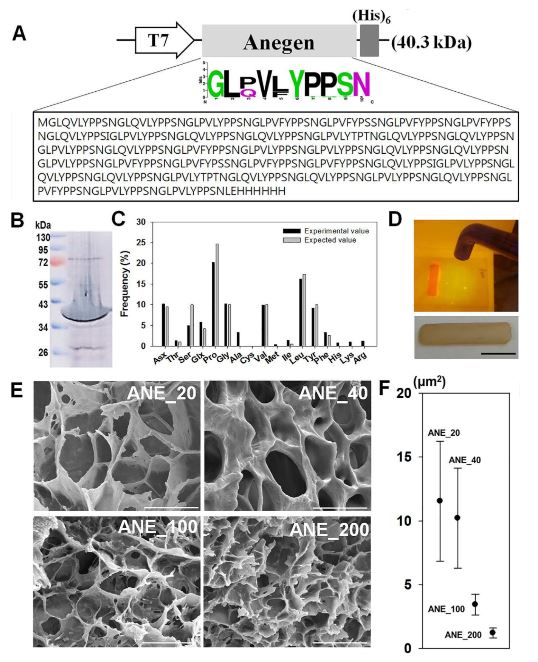With the help of recombinant DNA technology, many protein candidates have been investigated and engineered for biomaterial applications. Particularly, several repeat sequences with unique secondary structures have been selected as minimal building blocks for biosynthesis to improve the mechanical properties of biomaterials. However, most of these structural proteins have been limited to silk, elastin, collagen, and resilin for decades. In the present work, new repeat sequence found in sea anemone are characterized and biosynthesized into a recombinant protein (named anegen) for potential use as a load-bearing biomaterial. Because its repeat sequence unit has a unique polyproline II structure, which is prevalently found in the triple-helix of collagen, it is assumed to be a promising structural protein candidate that can provide conformational flexibility and elasticity. Because anegen has ~10% tyrosine residues, inspiration is taken from di-tyrosine crosslinking in the hinge structures of insects, which can be initiated by light activation. It is found that the anegen hydrogel shows higher mechanical properties than a gelatin hydrogel and endures a compression series without deformation. Moreover, the mechanical properties of the anegen hydrogel are controllable through different crosslinking conditions in a wide range of material applications. Importantly, the anegen hydrogel exhibited suitable cell retainability and cell morphology as an implantable biomaterial. Thus, based on its mechanical properties and biocompatibility, the anegen hydrogel can be used as a potential load-bearing and cell-loading scaffolding biomaterial in
the tissue and biomedical engineering fields.



















